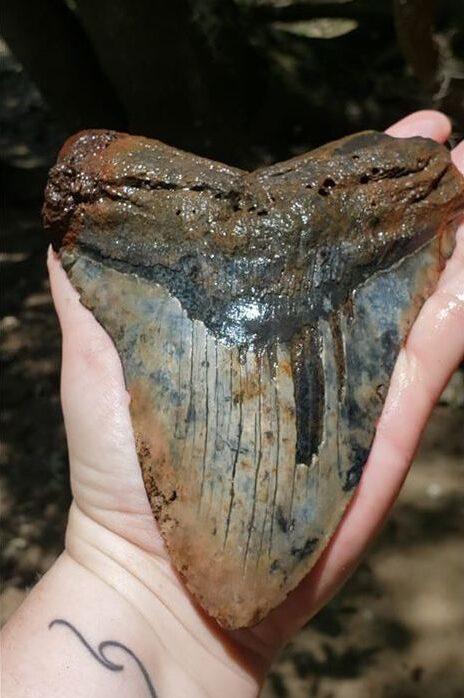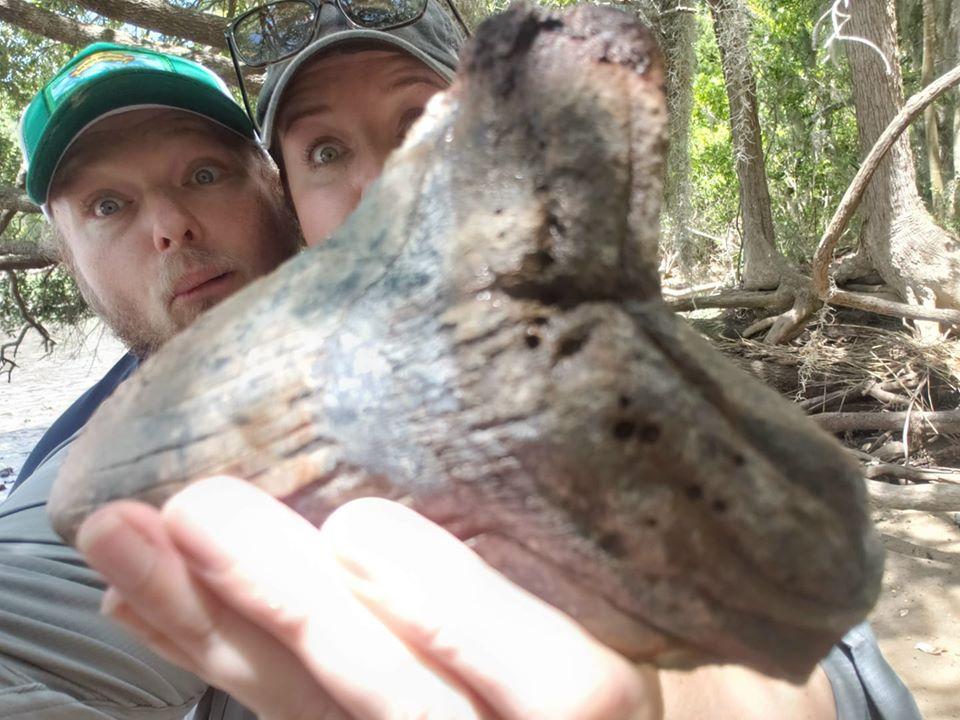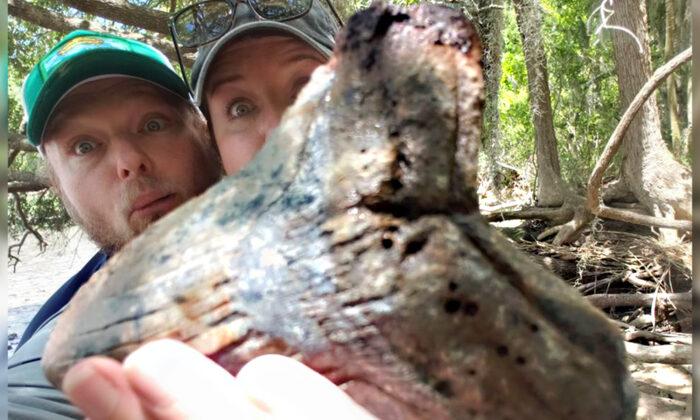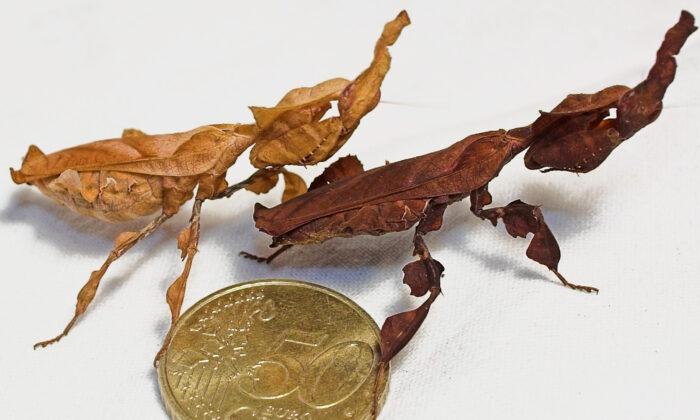The sci-fi thriller “The Meg” may have had many viewers jumping out of their seats, but the discovery of an enormous fossilized megalodon shark tooth in South Carolina shows just how terrifying these prehistoric creatures really must have been.
Her caption read: “If I never find another shark tooth, I will be just fine!”
The tooth measures 5.75 inches long and weighs just under 1 pound (approx. 450 g), and was estimated to be between 3 million and 5 million years old, according to the Mace Brown Museum of Natural History at the College of Charleston.

As Owens started to dig, her husband, Simon Chandley Owens, warned not to pull too hard and potentially break the fossil. The two became progressively more excited as they felt sure of their find. “Oh my God, you guys,” the lucky fossil hunter shouted. “I’m done. I can literally go home.”
The Charleston Natural History Museum authenticated the find and congratulated them on their sharp eyes. “That’s a great meg find—finds like that are why Charleston is known as the megalodon capital of the world!” they reportedly told Owens. Judging from the surrounding layer of Goose Creek limestone, the museum estimated the tooth to date from the Pliocene era.

As for why megalodon had such huge teeth, scientists believe they were adapted to hunt large marine animals. “If you are that big you need to eat a lot of food, so large prey is required,” London NHM fossil fish curator Emma Bernard explains.
Although the megalodon is long gone, it’s believed they once probably crossed paths with ancestors of the great white sharks of today. “As we’ve found more and more fossils, we’ve realized that the ancestor to the great white shark lived alongside megalodon,” Bernard says. “Some scientists think they might even have been in competition with each other.”
Meanwhile, Owens continues her shark tooth hunting, though she realizes this megalodon tooth might have been the find of her life. “I don’t want to say I’m done with shark tooth hunting because I love it,“ she confided, ”but I’m totally okay with finding little ones for the rest of my life now.”





